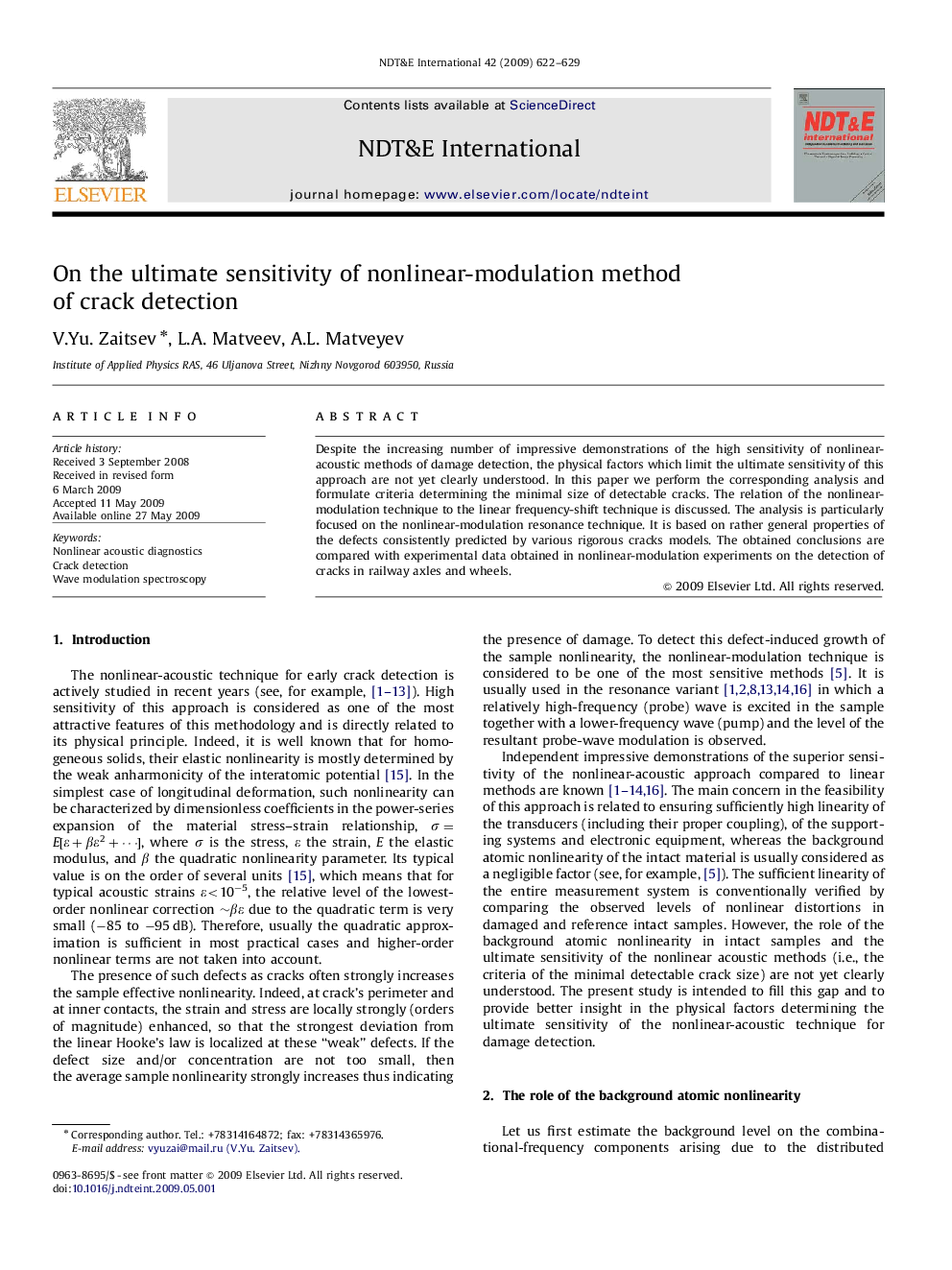| Article ID | Journal | Published Year | Pages | File Type |
|---|---|---|---|---|
| 295742 | NDT & E International | 2009 | 8 Pages |
Despite the increasing number of impressive demonstrations of the high sensitivity of nonlinear-acoustic methods of damage detection, the physical factors which limit the ultimate sensitivity of this approach are not yet clearly understood. In this paper we perform the corresponding analysis and formulate criteria determining the minimal size of detectable cracks. The relation of the nonlinear-modulation technique to the linear frequency-shift technique is discussed. The analysis is particularly focused on the nonlinear-modulation resonance technique. It is based on rather general properties of the defects consistently predicted by various rigorous cracks models. The obtained conclusions are compared with experimental data obtained in nonlinear-modulation experiments on the detection of cracks in railway axles and wheels.
